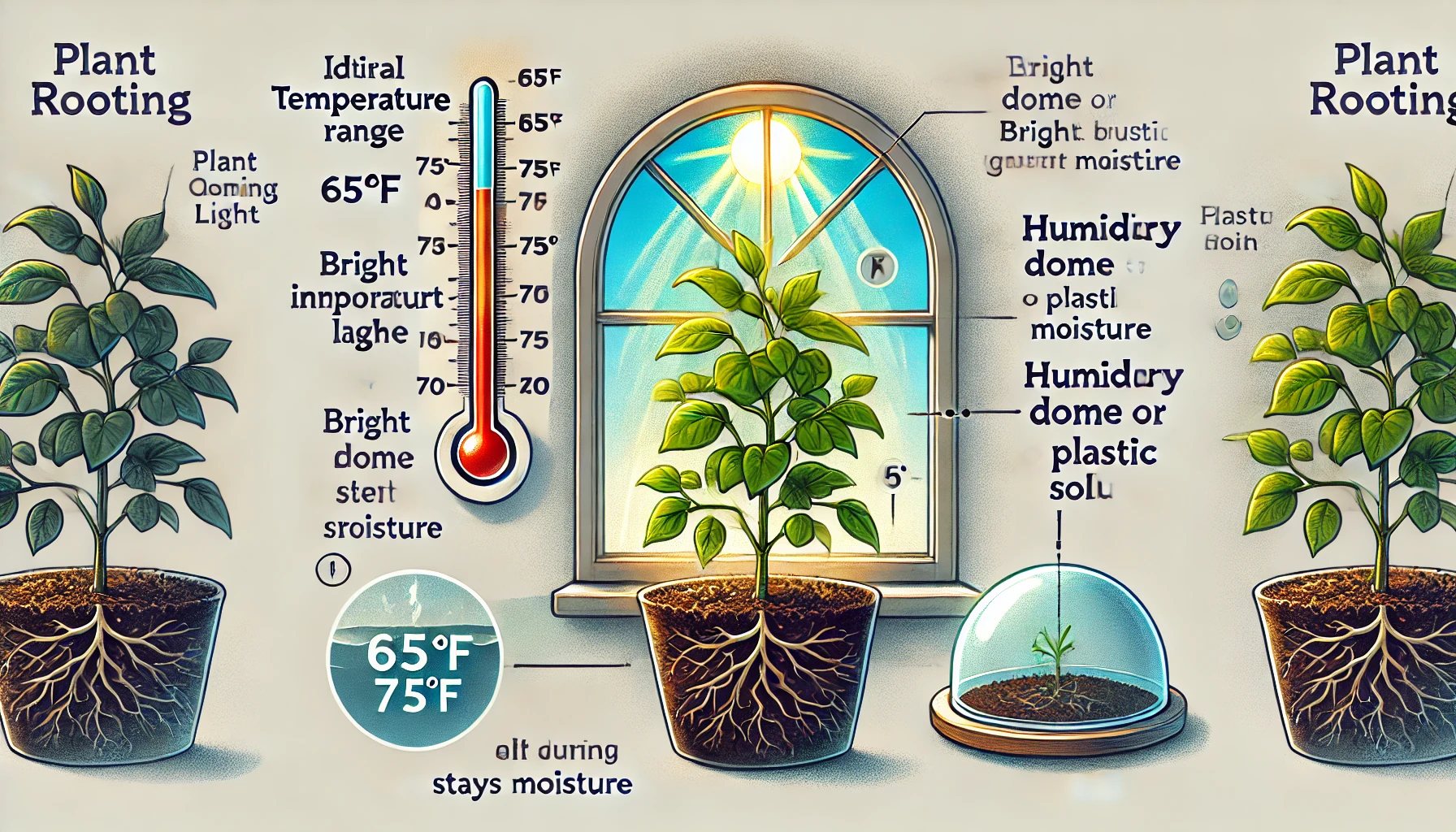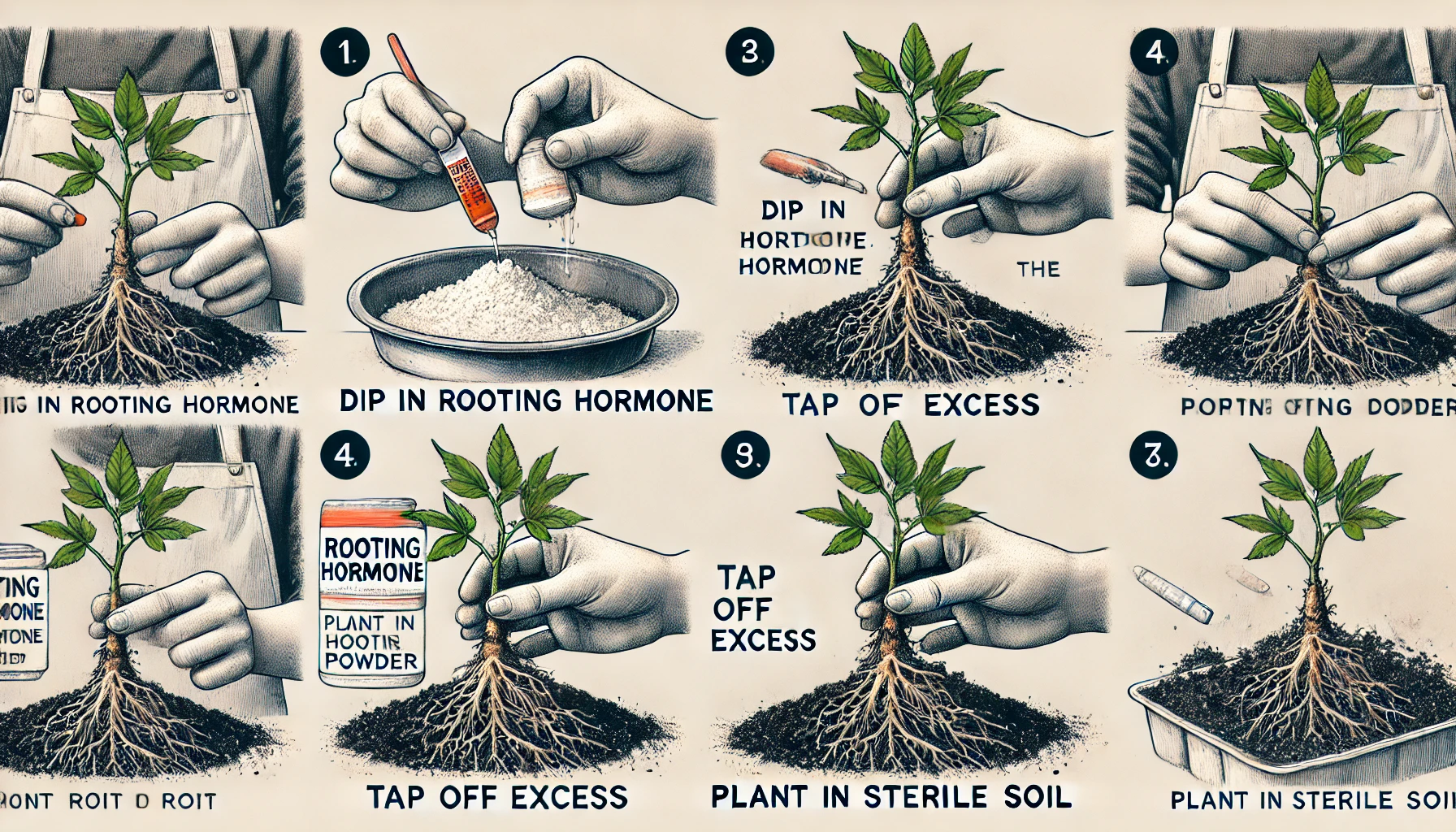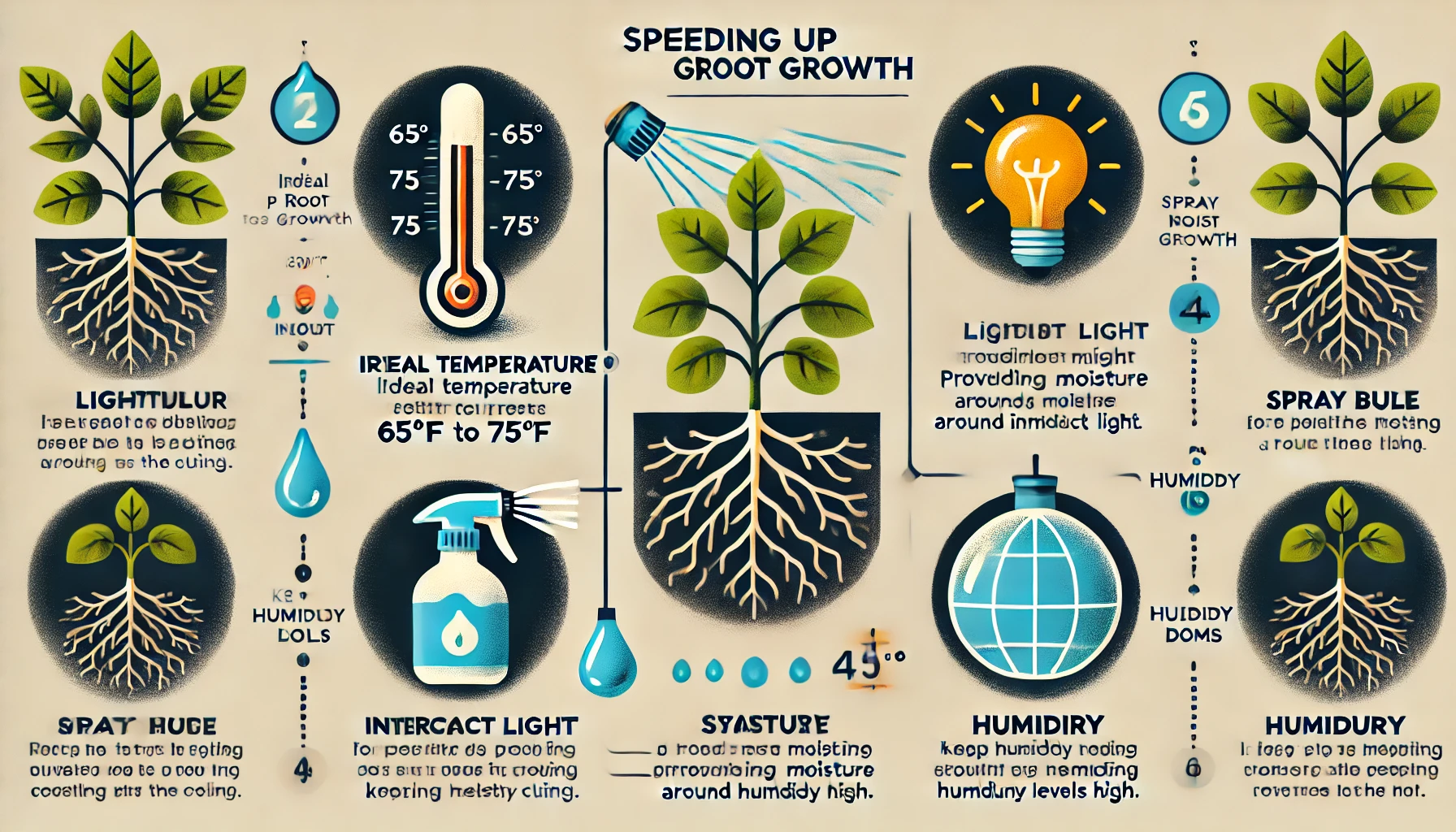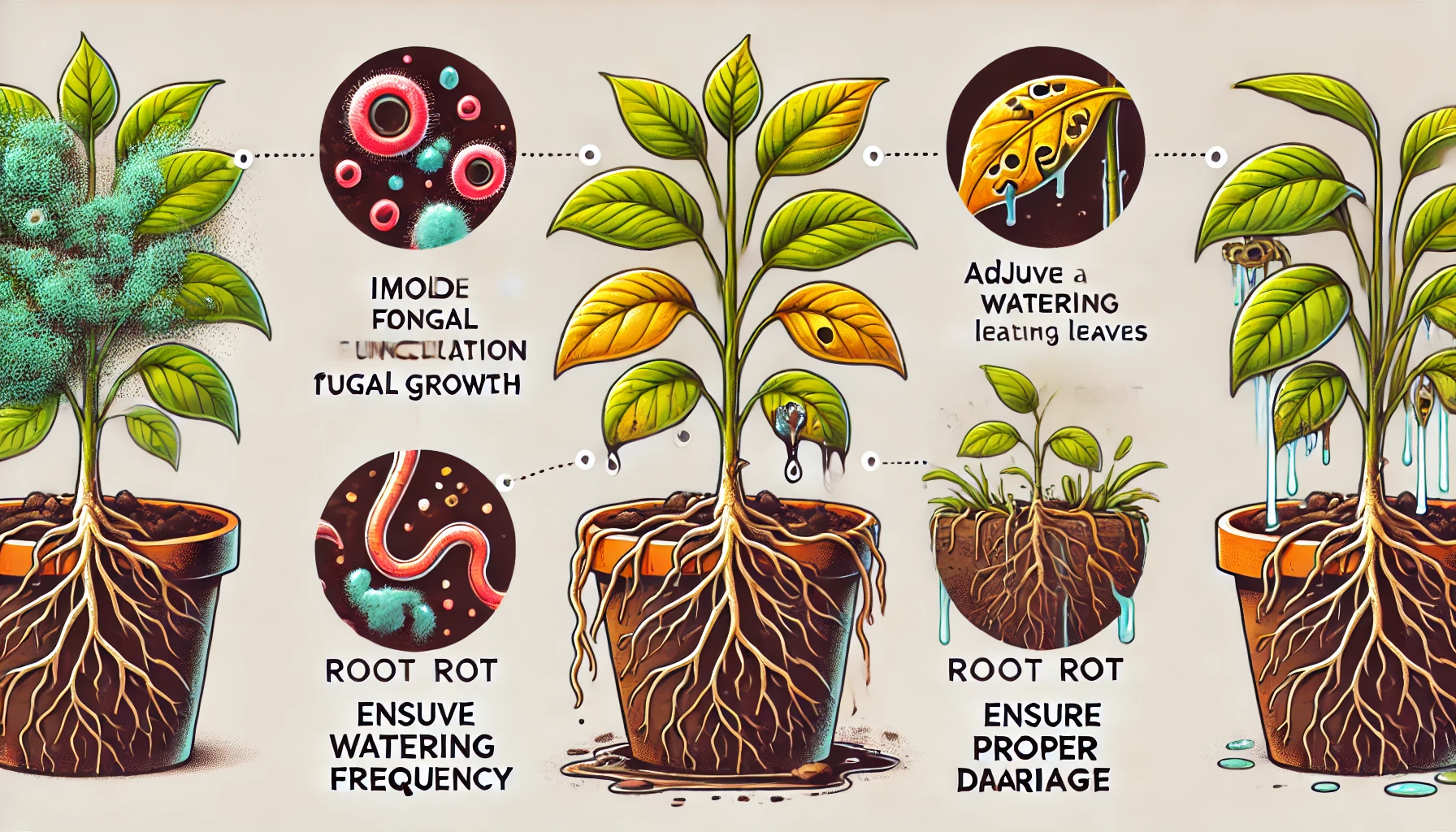
How to Speed Up Root Growth: Effective Tips for Faster Plant Propagation
If you’re eager to see your plant cuttings grow roots faster, you’re not alone. Many gardeners wonder how to speed up root growth and give their plants the best start possible. Whether you’re propagating new plants for your home or garden, boosting root development can be the key to quicker, healthier growth. In this article, we’ll share proven strategies and expert tips to accelerate root growth, from using the right rooting hormones to creating optimal environmental conditions. With these effective techniques, you’ll see faster results and a flourishing plant collection in no time!
Table of Contents
ToggleUnderstanding the Rooting Process
Rooting is the critical first step in propagating vining plants, where cuttings develop a robust root system to support healthy growth. To ensure success, it’s essential to understand the science behind rooting and how to optimize the process.
When you take a cutting from a healthy vining plant, it needs to establish roots in order to survive and thrive. Sterile soil for rooting cuttings plays a crucial role here, as it prevents pathogens that could hinder root development. The soil should be lightweight, well-draining, and free from any contaminants that could harm the cutting.
The cutting, once placed in the soil or water, will begin to develop calluses at the cut end. Over time, small root hairs form, eventually growing into a full root system that anchors the plant and allows it to absorb nutrients and water.
Environmental conditions such as warmth, humidity, and light are key factors for successful rooting. Vining plant cuttings thrive in bright, indirect light and consistent humidity. Maintaining a stable temperature between 65°F to 75°F (18°C to 24°C) promotes faster root growth.
By providing the right soil, environment, and care, your cuttings can quickly establish healthy roots, giving your vining plants the best chance for fast, thriving growth.
Optimal Conditions for Faster Root Growth
When propagating vining plants, creating the perfect environment for your cuttings is key to encouraging quick and healthy root growth. Here are the essential conditions you should focus on to speed up the rooting process:
1. Temperature
Vining plants root best in warm conditions. The ideal temperature for most cuttings is between 65°F to 75°F (18°C to 24°C). A warm environment helps stimulate root production. If temperatures drop too low, root growth slows down, and if they’re too high, cuttings may dry out or become stressed. Keep the cuttings in a consistent, warm area to promote rapid rooting.

2. Light
Cuttings need bright, indirect light to encourage healthy root development. Avoid direct sunlight, as it can scorch the cuttings and hinder rooting. Place your cuttings near a window with filtered light or use grow lights for about 12-16 hours a day to mimic optimal light conditions. Ensure that the light is not too intense, as this can lead to dehydration or sunburn.
3. Humidity
Humidity is crucial for rooting. High humidity helps the cuttings retain moisture while they form roots. Use a humidity dome, plastic wrap, or a clear plastic bag to cover your cuttings and trap moisture. Be sure to ventilate regularly to prevent mold or fungal growth, which can harm the cuttings. A humidity level of around 60-80% is ideal for rooting success.
4. Sterile Soil
Using sterile soil for rooting cuttings is essential to prevent fungal infections and diseases. Sterile soil offers a clean, disease-free environment for your cuttings to thrive. Use well-draining potting mix or a specialized rooting medium to ensure that the soil retains enough moisture while allowing excess water to drain, preventing rot.
5. Consistent Moisture
Keep the soil consistently moist, but not soggy. Overwatering can lead to root rot, while underwatering can cause dehydration and stunt root growth. Check the soil regularly, and use a spray bottle to lightly mist the cuttings if needed. This keeps the moisture level balanced and encourages quicker rooting.
By ensuring the right temperature, light, humidity, soil, and moisture, you’ll create an ideal environment for your vining plant cuttings to root quickly and healthily. These simple yet effective conditions will help you see faster results and stronger growth in no time!
Choosing the Right Medium for Rooting
When propagating vining plants, choosing the right medium for rooting is crucial to ensure healthy, fast growth. The right medium supports root development and minimizes the risk of diseases, setting your plants up for success.
Sterile Soil for Rooting Cuttings
One of the best options for rooting vining plants is sterile soil for rooting cuttings. This soil is free from pests, fungi, and other pathogens, ensuring your cuttings remain healthy as they develop roots. It also provides the perfect balance of drainage and moisture retention, which is essential for rooting success.

- Why Choose Sterile Soil?
Using sterile soil prevents contamination, which can hinder root development and cause diseases like root rot. It ensures that your plant starts in a clean environment, giving it the best chance to thrive. - What to Look for in Sterile Soil?
Opt for a light, well-draining mix. Many gardeners prefer using a blend of perlite and peat moss or a commercial seed-starting mix. These options promote air circulation around the roots, which speeds up the rooting process.
Water as an Alternative
For some vining plants like pothos or philodendron, you can start rooting in water. Place the cuttings in a jar with enough water to submerge the nodes (the part where roots will grow). After a few weeks, when roots start to appear, transfer the cuttings into soil.
- Water Propagation Benefits:
- Easy to monitor root development.
- No need for a soil medium initially.
- Ideal for plants that root easily in water, like pothos and philodendron.
Choosing the Best Medium for Your Plant
While sterile soil is the go-to medium for most vining plants, it’s important to choose based on the plant’s specific needs:
- Light, well-draining soil is essential for most vining plants.
- Water propagation can be great for faster-growing plants with delicate roots.
In summary, selecting the right medium—whether it’s sterile soil for rooting cuttings or water—depends on the plant’s preferences and your desired rooting speed. By choosing the best medium, you’re setting your cuttings up for successful, healthy growth.
Using Rooting Hormone for Accelerated Growth
Rooting hormone is a powerful tool that can significantly speed up the process of root development when propagating vining plants. While not always necessary, it can be particularly useful for harder-to-root plants or when you’re looking for faster results.
What is Rooting Hormone?
Rooting hormone is a powdered or liquid compound that contains auxins—natural plant hormones that stimulate root growth. It helps cuttings establish strong, healthy roots more quickly, reducing the risk of failure.
When to Use Rooting Hormone
You should consider using rooting hormone if:
- You’re propagating plants that are known to root slowly, like some varieties of ivy or philodendron.
- The cuttings are taken from a less-than-ideal plant or have weaker growth.
- You want to ensure quicker, healthier root development.
How to Apply Rooting Hormone
- Prepare the Cutting: After taking your cutting, remove any lower leaves and trim the stem just below a node (the area where roots will form).
- Dip the Cutting: Lightly dip the cut end of the stem into the rooting hormone powder. Tap off any excess to avoid clumping.
- Plant in Soil: Place the hormone-treated cutting in sterile soil for rooting cuttings, ensuring the treated end is buried properly.

Benefits of Using Rooting Hormone
- Faster Rooting: Rooting hormone helps stimulate quicker root formation, especially in slow-to-root species.
- Stronger Roots: It encourages the development of a larger, more robust root system, leading to healthier plants.
- Improved Success Rates: For beginners or tricky plants, rooting hormone boosts the chances of successful propagation.
Tips for Best Results
- Ensure the cutting’s base is clean and free of debris before applying the hormone.
- Don’t overuse the hormone; a light dusting is sufficient.
- Keep the cuttings in a warm, humid environment for the best root growth.
Using rooting hormone is an easy and effective way to boost your vining plant propagation efforts, leading to quicker, healthier growth. With these simple steps, you can enhance your chances of success and enjoy thriving plants in no time!
Tips for Speeding Up Root Growth
Speeding up root growth for your vining plants doesn’t have to be complicated. By following a few key strategies, you can encourage faster, healthier root development and see results sooner. Here’s how:
- Use Sterile Soil for Rooting Cuttings
- Start with sterile soil for rooting cuttings to avoid infections and ensure your plants grow strong. This clean soil promotes healthy root development by preventing disease and pests that can slow growth.
- Maintain Ideal Temperature
- Vining plants thrive in warm environments. Keep your cuttings in a spot with a temperature between 70°F (21°C) and 75°F (24°C). Warmth speeds up cellular activity, encouraging faster rooting.
- Provide Indirect Light
- Place your cuttings in bright, indirect light. Too much direct sunlight can stress your plants, while too little light can slow down the rooting process. Aim for 12-16 hours of gentle light per day.

- Use a Humidity Dome
- To lock in moisture and increase humidity, cover your cuttings with a humidity dome or clear plastic bag. High humidity helps the cuttings conserve water, reducing stress while they form roots.
- Water Properly
- Keep the soil consistently moist, but not soggy. Overwatering can lead to rot, while dry soil slows root growth. Watering with a mist or spray bottle can help maintain moisture levels without drowning the cutting.
- Apply Rooting Hormone (Optional)
- For a little extra boost, use a rooting hormone to promote quicker root formation. Dip the cut end of your cutting into the hormone before planting to speed up the rooting process.
By implementing these tips, you’ll give your vining plants the best chance for quick, robust root growth. Keep the conditions optimal, and your cuttings will thrive in no time!
Preventing and Troubleshooting Rooting Issues
Rooting cuttings can sometimes come with challenges, but with the right approach, most issues can be prevented or easily fixed. Here are the common rooting problems and expert solutions:
Mold and Fungal Growth
Mold or fungus can develop if the soil stays too moist or the humidity is too high. To prevent this:
- Use well-draining sterile soil: Always use sterile soil for rooting cuttings to avoid introducing pathogens.
- Ensure proper ventilation: Avoid covering cuttings with plastic for too long. Open the humidity dome or plastic bag daily for a few minutes to allow air circulation.
- Remove moldy cuttings: If you spot mold, remove the affected cuttings immediately to prevent it from spreading.
Slow or No Rooting
If your cuttings are taking too long to root or aren’t rooting at all:
- Check the temperature: Rooting works best in temperatures between 65°F and 75°F (18°C to 24°C). Too cold or too hot will slow the process.
- Proper lighting: Keep the cuttings in indirect light. Too much sunlight can dry them out, while too little can delay rooting.
- Use fresh cuttings: Ensure you’re using healthy, fresh cuttings that haven’t dried out.
Yellowing Leaves or Wilting
Yellowing or wilting leaves often indicate stress, typically from too much water, poor soil, or low light.
- Avoid overwatering: Ensure the soil is moist but not soggy. Allow the top of the soil to dry out between waterings.
- Improve light conditions: Make sure the cuttings are getting enough indirect sunlight. If not, move them to a brighter spot.
- Check for pests: Sometimes, pests like aphids can stress the plant. Inspect regularly and treat with natural pest control if necessary.
Root Rot
Root rot happens when the roots are submerged in waterlogged soil, leading to decay.
- Ensure drainage: Use pots with drainage holes, and avoid overwatering.
- Replace soggy soil: If you suspect root rot, carefully remove the cutting, trim any rotted roots, and replant in fresh, sterile soil.
In conclusion, speeding up root growth during plant propagation is a rewarding process that requires attention to detail and patience. By understanding the factors that influence rooting—such as temperature, humidity, light, and the right medium—you can create the ideal environment for faster, healthier roots. Using rooting hormone, maintaining proper moisture levels, and ensuring cuttings are kept in optimal conditions will significantly boost the success rate of your propagation efforts.
Remember, while speed is essential, healthy, strong roots are the foundation of a thriving plant. By following the tips shared in this guide, you’ll not only expedite the rooting process but also ensure your plants grow strong and robust. So, get started today, apply these techniques, and watch your plants thrive from cutting to full growth! Happy propagating!
Frequently Asked Questions(FAQ)
How can I speed up root growth for my plant cuttings?
To speed up root growth, ensure you’re using a well-draining propagation medium, maintain optimal temperature and humidity, and consider using rooting hormones. Keeping your cuttings in indirect sunlight and avoiding overwatering will also help accelerate root development.
What conditions are best for speeding up root growth?
A warm environment (65-75°F or 18-24°C) with high humidity, indirect light, and proper drainage is ideal for faster root growth. Avoid placing cuttings in direct sunlight, which can cause them to dry out and stunt root development.
Does using rooting hormone really help speed up root growth?
Yes, rooting hormones can promote faster and stronger root development by stimulating cell growth. Applying rooting hormone to the cut end of the stem can significantly speed up the rooting process, especially for harder-to-root plants.
How often should I water my cuttings to speed up root growth?
Watering should be done sparingly. Keep the soil slightly moist, but never soggy. Overwatering can lead to rot, slowing down root growth. Let the surface of the soil dry out before watering again to encourage healthy root development.
Can I speed up root growth by using different propagation methods?
Yes! Some plants root faster in water, while others do better in soil. If you’re looking to speed up root growth, try experimenting with both methods to see which works best for the plant species you’re propagating.
What can I do if my cuttings aren’t rooting fast enough?
If your cuttings aren’t rooting, ensure you’re following the correct care techniques, such as maintaining proper moisture, using a sterile medium, and keeping the environment ideal. If problems persist, check for rot and replace the medium or cutting, if necessary.
How long does it typically take for roots to grow in cuttings?
The time it takes for cuttings to root varies by species. Some plants can root in a few weeks, while others may take several months. By maintaining the right conditions, you can help speed up the process and ensure healthy root development.
Can I speed up root growth by fertilizing my cuttings?
It’s best to wait until roots have developed before applying fertilizer. Fertilizing too early can stress the cutting. Once the roots are established, applying a mild, balanced fertilizer can encourage healthy growth.

